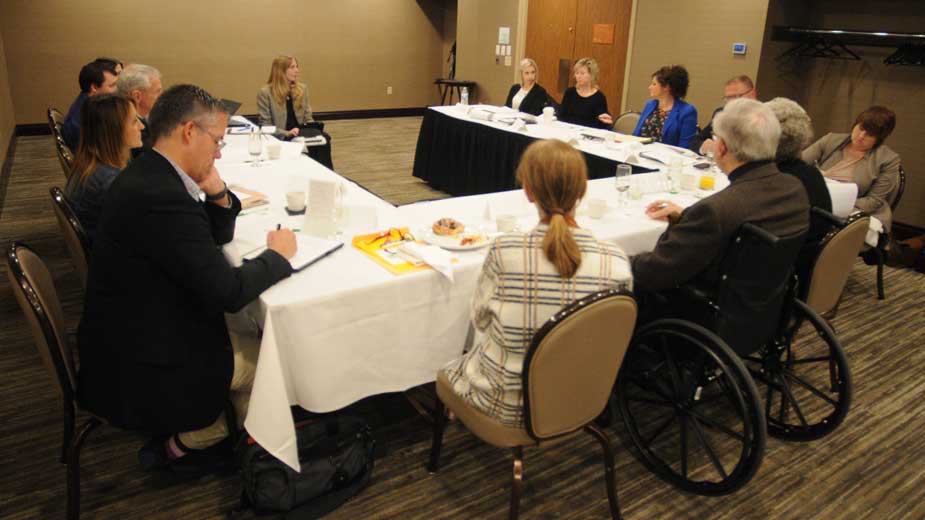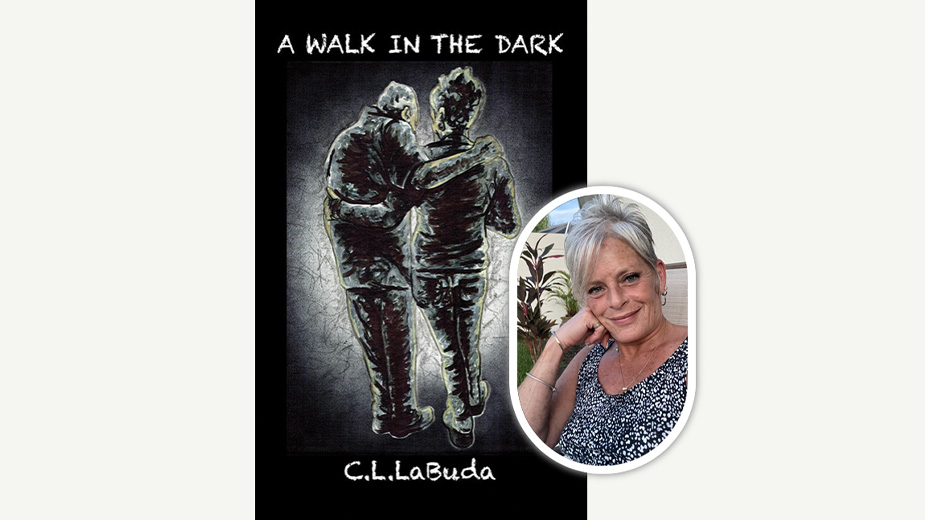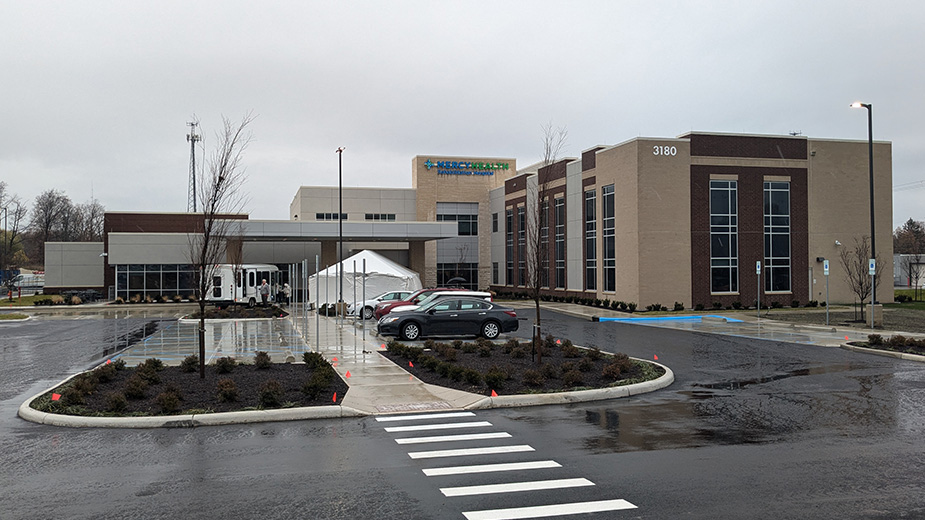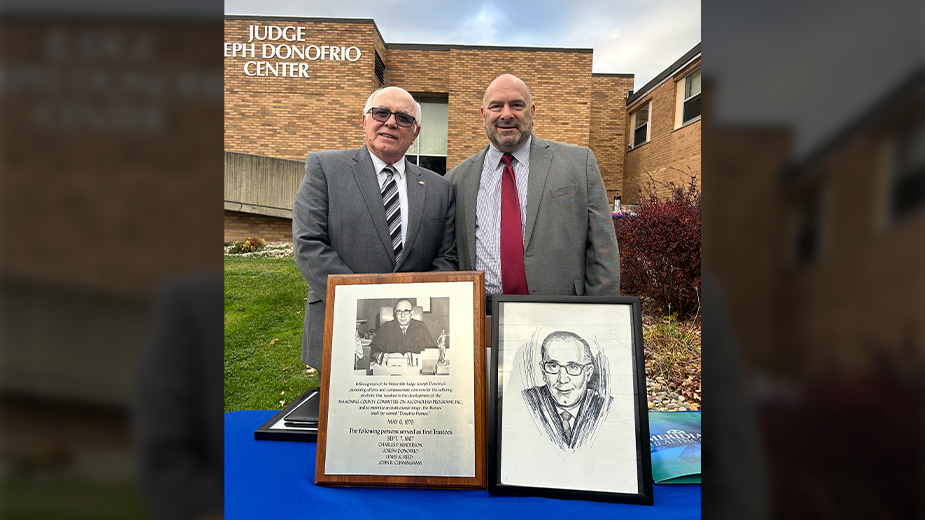Nursing Homes Adapt to New Medicare Payment Model
YOUNGSTOWN, Ohio — Changes in Medicare reimbursement rates for skilled nursing facilities are causing them to create discharge plans before patients arrive.
Reimbursement rates, workforce shortages, a lack of educational tools for caregivers and federal quality measures used to grade facilities were among the issues discussed by long-term care professionals at a Senior Health Care roundtable hosted Tuesday by The Business Journal. The transcript from the discussion will be published in the November print edition.
The Patient Driven Payment Model is the Center for Medicare and Medicaid Services’ (CMS) revamped payment scale for skilled nursing facilities. It went into effect Oct. 1.
Medicare is the nation’s health insurance program for people 65 or older. Medicare also covers people under 65 with a certain disabilities, those with permanent kidney failure or amyotrophic lateral sclerosis (Lou Gehrig’s disease). More information is available at Medicare.gov.
Major changes include length of stay for short-term rehabilitation, assessment, diagnoses and billing codes as well as a shift from a constant per diem rate to a variable rate, which adjusts the per diem payment over the course of the patient’s stay.
The length of short-term therapy will be limited to a nine-day end of stay instead of an average of 14 days. Longer rehabilitation stays will result in reduced reimbursements.
Brian Kolenich, executive director of Ohio Living Park Vista, said the model is meant to be more patient driven. Richard Limongi, CEO for Shepherd of the Valley, sees the new system as being driven by managed care organizations.
Diane Reese, president of EDM Management, which operates Briarfield Health Care Centers and five assisted living facilities, agrees. “Managed care is estimating how many days with a lesser level of care. It’s almost laughable. They are saying nine days and we’re looking at 14.”
She added that managed care is not seeing the whole picture when it comes to short-term rehabilitation. “Hospitals are discharging too soon to us and we then send them home to maybe an unsafe environment or lack of caregivers,” she said. “Nine days is not going to fix this problem. It’s a challenge.”
This new challenge comes on the heels of prevention efforts to reduce hospital readmissions.
According to a CMS fact sheet, the old payment system was primarily based on the volume of therapy services, which created an incentive to furnish therapy regardless of the patient’s needs. The Patient Driven Payment Model eliminates this incentive.
Annalee Hutchison, nursing home administrator at Windsor House at Liberty Health Care Center, said facilities are seeing costs rise for staff training as patients are arriving with higher acuity levels that staff is not ready to handle.
“Hospitals are sending us patients too quickly, and there is a reduced service from us and finding home health care is difficult,” Hutchison said.
The quick turnaround also puts a strain on home health care, which already is facing a national shortage of workers.
Cassandra Valentini, community liaison for Direction Home of Eastern Ohio, said there is not enough time to safely discharge a patient. “Home settings are not based on payment models. This will create an influx of people needing service at home, and there isn’t enough time that an assessment and staffing needs.
Transitioning from skilled care facilities to home is less expensive for Medicare. But it may hit a snag with a national shortage in the direct-care workforce.
State Tested Nursing Assistants in facilities and home health care (STNAs) receive hourly rates of $10 to $11 an hour. The state average is $11.66.
In order to combat low pay rates for a demanding job, many facilities are offering educational incentives such as scholarships for STNA certification, paying educational costs to become a licensed practical nurse or offering shift differentials.
But higher paying jobs are hard to combat. “We’ve had people leave during the holidays because they can make more money working at Bed Bath and Beyond,” Limongi said.
“Being an STNA is one of the hardest jobs, but it’s also the most rewarding,” Reese said.
Despite its rewards, staff shortages have increased the number of unpaid caregivers taking care of loved ones at home. Finding caregiver resources can be subjective and time consuming. More education is needed, Reese said. “There are resources out there, but children don’t know about them until there is a crisis.”
Valentini said Direction Home of Eastern Ohio offers a Family Caregiver Support program that has support groups, services and respite care for caregivers, but funding for the program is limited and wait-lists exist. “The majority of people aren’t Medicaid eligible and some of our programs that offer services not based on income have huge wait lists.”
There is a short window for educating patients and families as Medicare Open Enrollment began Oct. 15. A lack of education on Medicare coverage often leads to confusion.
“Hospitals have a shorter window for stays. They (patients) come to us for about 10 days and families are in shock,” Kolenich said. “If more time is needed it reverts back to private pay.”
With the new system comes an increase in documentation and paperwork – a time consuming, but necessary, process.
“We’re like nuclear plants when it comes to regulation,” Reese said, of the extent of regulations imposed on the skilled nursing industry. “We document because it’s part of the regulations.”
Limongi added that it is a paper-driven system and that all staff involved in care must document into the system. “We don’t really have time for bed-side talks anymore. It’s a lost art,” he said.
Jodi McHenry of Patriot Home Care said her company’s requirements have staff seeing six patients daily. “They then spend about four to five hours documenting,” she said.
Much of that documentation is used for a federal grading system for a nursing home compare report card through CMS. Facilities seek a five-star rating. Roundtable participants agreed that the system is misleading and not objective as staffing numbers aren’t always reflective as coding errors can affect outcomes.
“You can have one complex patient that puts you at risk from receiving a five-star rating,” Kolenich said. It’s a system with no room for error, Reese added.
“We need to rethink how we assess,” Limongi said. “It comes down to quality.”
“It’s really just a numbers game,” Hutchison added.
Valentini said when people call her agency asking about nursing homes, they aren’t directed to a nursing home compare list. “We tell them to go and visit the facility,” she said. “Online tools are just one part of the journey to a person’s potential home.”
Copyright 2024 The Business Journal, Youngstown, Ohio.



